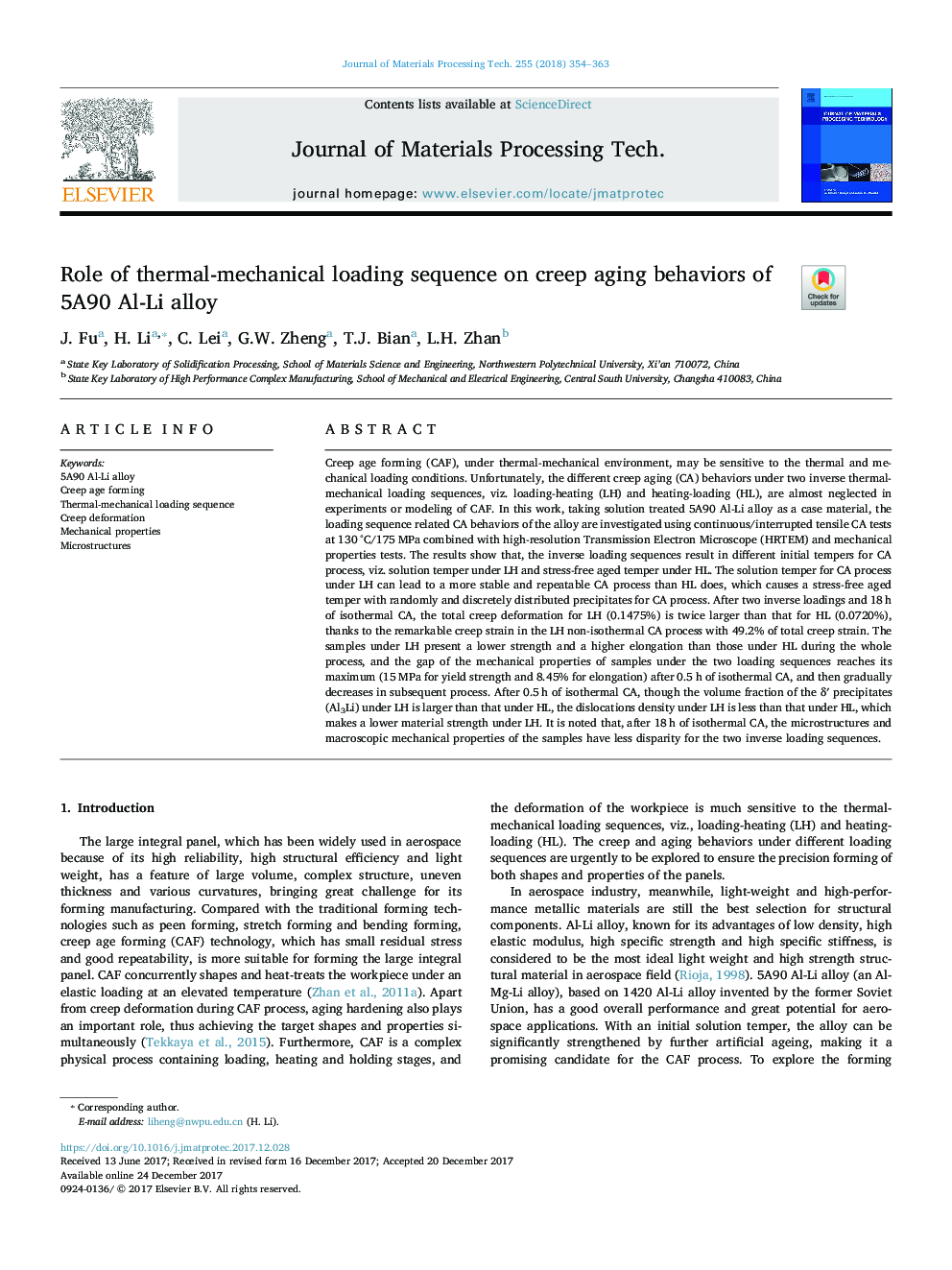| کد مقاله | کد نشریه | سال انتشار | مقاله انگلیسی | نسخه تمام متن |
|---|---|---|---|---|
| 7176449 | 1466712 | 2018 | 10 صفحه PDF | دانلود رایگان |
عنوان انگلیسی مقاله ISI
Role of thermal-mechanical loading sequence on creep aging behaviors of 5A90 Al-Li alloy
دانلود مقاله + سفارش ترجمه
دانلود مقاله ISI انگلیسی
رایگان برای ایرانیان
کلمات کلیدی
موضوعات مرتبط
مهندسی و علوم پایه
سایر رشته های مهندسی
مهندسی صنعتی و تولید
پیش نمایش صفحه اول مقاله

چکیده انگلیسی
Creep age forming (CAF), under thermal-mechanical environment, may be sensitive to the thermal and mechanical loading conditions. Unfortunately, the different creep aging (CA) behaviors under two inverse thermal-mechanical loading sequences, viz. loading-heating (LH) and heating-loading (HL), are almost neglected in experiments or modeling of CAF. In this work, taking solution treated 5A90 Al-Li alloy as a case material, the loading sequence related CA behaviors of the alloy are investigated using continuous/interrupted tensile CA tests at 130â¯Â°C/175â¯MPa combined with high-resolution Transmission Electron Microscope (HRTEM) and mechanical properties tests. The results show that, the inverse loading sequences result in different initial tempers for CA process, viz. solution temper under LH and stress-free aged temper under HL. The solution temper for CA process under LH can lead to a more stable and repeatable CA process than HL does, which causes a stress-free aged temper with randomly and discretely distributed precipitates for CA process. After two inverse loadings and 18â¯h of isothermal CA, the total creep deformation for LH (0.1475%) is twice larger than that for HL (0.0720%), thanks to the remarkable creep strain in the LH non-isothermal CA process with 49.2% of total creep strain. The samples under LH present a lower strength and a higher elongation than those under HL during the whole process, and the gap of the mechanical properties of samples under the two loading sequences reaches its maximum (15â¯MPa for yield strength and 8.45% for elongation) after 0.5â¯h of isothermal CA, and then gradually decreases in subsequent process. After 0.5â¯h of isothermal CA, though the volume fraction of the δⲠprecipitates (Al3Li) under LH is larger than that under HL, the dislocations density under LH is less than that under HL, which makes a lower material strength under LH. It is noted that, after 18â¯h of isothermal CA, the microstructures and macroscopic mechanical properties of the samples have less disparity for the two inverse loading sequences.
ناشر
Database: Elsevier - ScienceDirect (ساینس دایرکت)
Journal: Journal of Materials Processing Technology - Volume 255, May 2018, Pages 354-363
Journal: Journal of Materials Processing Technology - Volume 255, May 2018, Pages 354-363
نویسندگان
J. Fu, H. Li, C. Lei, G.W. Zheng, T.J. Bian, L.H. Zhan,